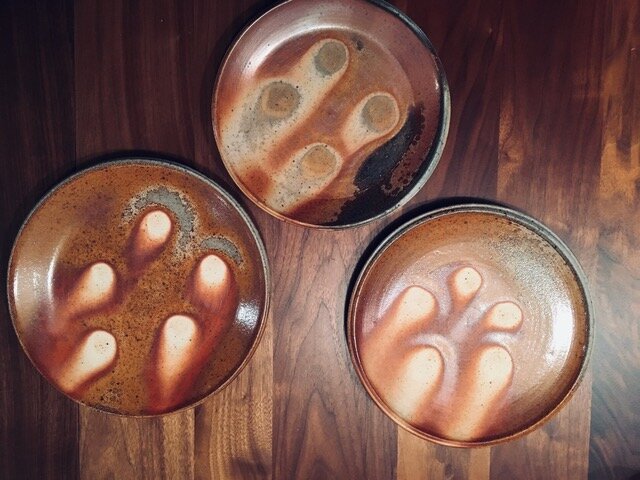Rekha SRINIVASAN
Rekha SRINIVASAN
I am a potter. My love for clay comes from where I was raised. Bengal, India, has a fabulous clay tradition: life-size mud idols used in community celebrations, votive animal figurines, temples built entirely of terracotta tile, vibrant turquoise earthenware pottery sold on the streets for a pittance, unglazed terracotta tea-cups and water pots for everyday use. All these were deeply embedded in my conscience from a very early age. We drank and ate tea and water, sweets and yogurt out of cool terracotta, before plastic reared its ugly head. Somewhere inside me all this sat dormant for decades, tugging at me peripherally: I went to graduate school in the United States, worked in large corporations for more than a decade: happy and loving both, but always wanting to do a little pottery on the side. I moved countries and changed work assignments at a dizzying speed: moving often between Europe and India: and pottery became a dream again. I answered the attraction to pottery as a consumer: taking great pleasure in the feel and functionality of ceramic objects. I finally succumbed to the draw of pottery full-time in 2013, learning from an assortment of fabulous teachers in India (from a traditional potter with extremely Indian sensibilities to studio potters with contemporary and Japanese influences), learning in environments as diverse as the people that taught me (from the heart of Mumbai to the most bucolic of studios in the coastal town of Pondicherry). My pottery is made almost entirely on the wheel, a process that is deeply meditative and calming to me, and the resulting functional ware is in sync with my practical, left-brained self. I am primarily concerned with the line and form of any pot I throw, proportion and profile being of paramount importance. I strive to make pots that are comfortable to use and function-appropriate: pots which are to be part of the user’s daily ritual, rather than objects of decoration. I love hearing that a coffee mug sits comfortably in someone’s hands or that the last bit of curry spoons smoothly out of the bottom of a bowl. That these functional pieces are also aesthetic, is, for me a complementary by-product, rather than the driving force of making a pot. While decorating pots I am influenced by my need for simplicity and clarity: its how I lead my life and how I make my pots. Surface decoration usually takes the form of simple brushstrokes, scribbled alphabets, impressions everyday objects, and natural shapes. In terms of colour I love the earthiness of slips on naked clay and neutral glazes that don’t distract from form. I fire my work using a variety of kilns, but there is nothing I enjoy more than wood-firing. I am totally enamoured by the magic that fire and wood can create, the long slow process of firing, and the aesthetic of the final product But more than anything else, what draws me to this process is its collaborative community aspect. I love meeting, working together with and learning from other potters. Finding this craft has been a blessing. Pottery has helped to calm and center me, to hone my patience and keep me content. That people allow my pots to be such an intimate part of their daily lives touches me immensely.




